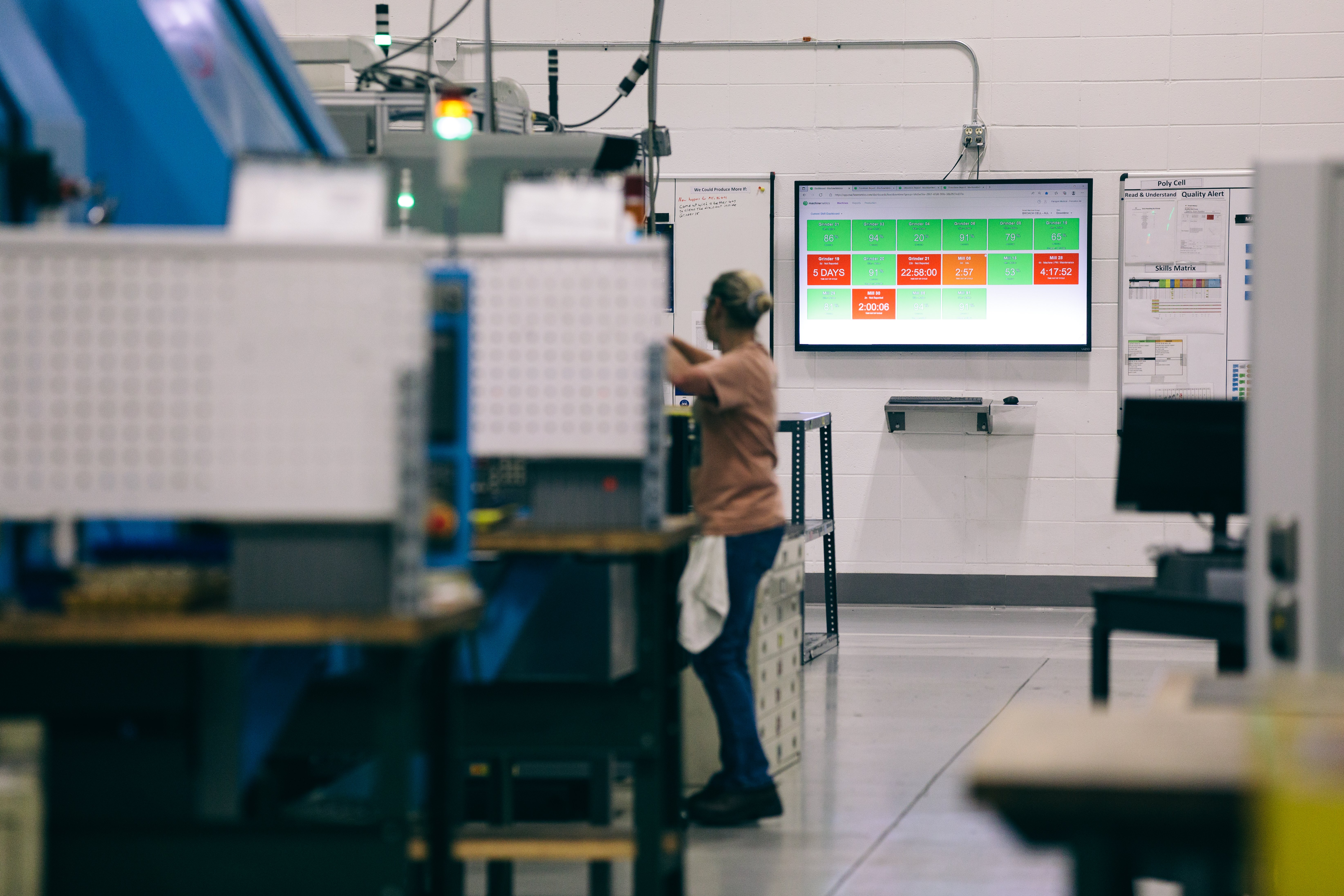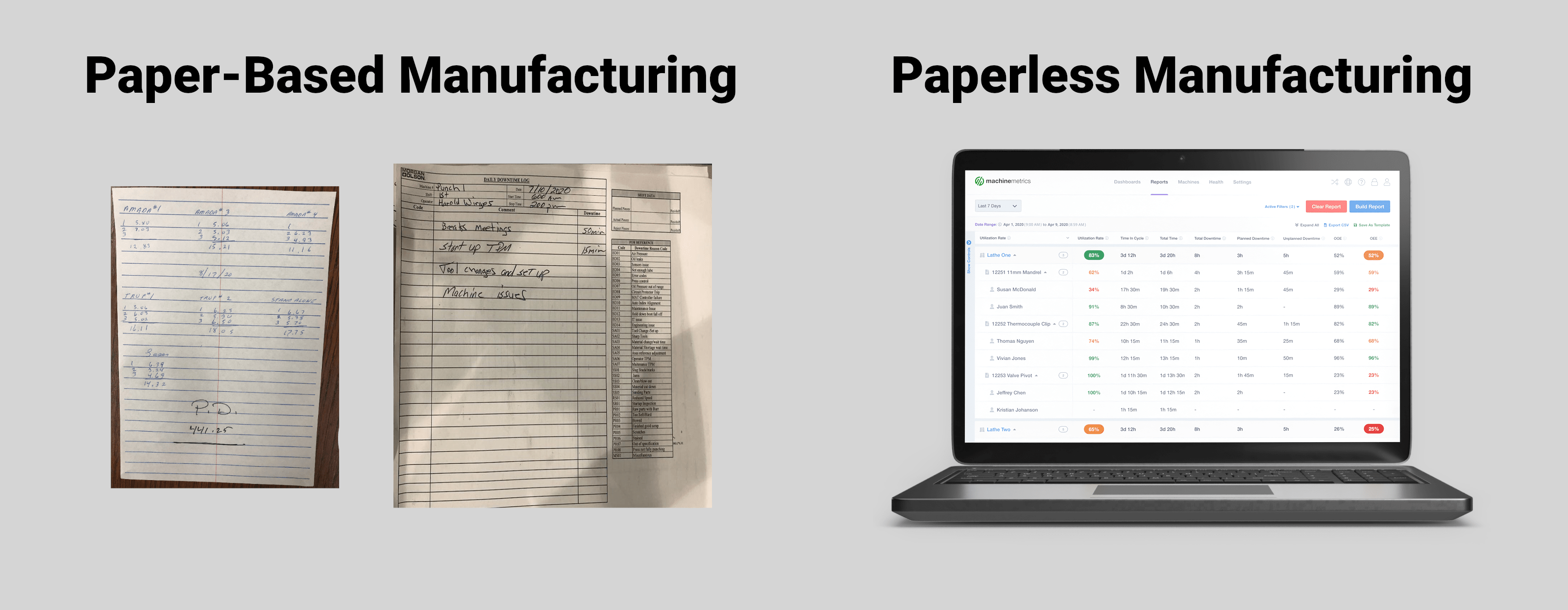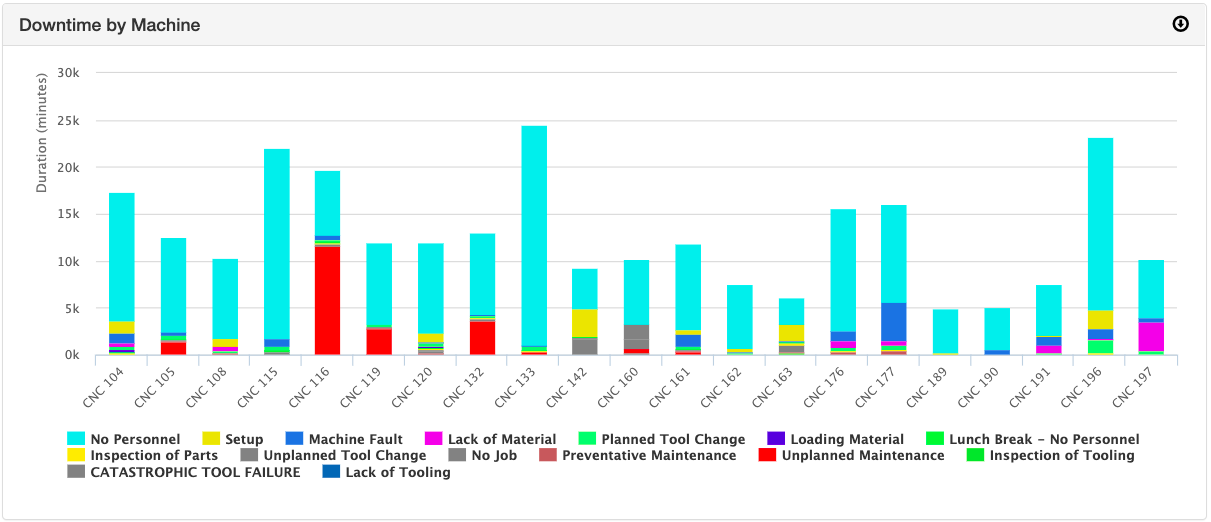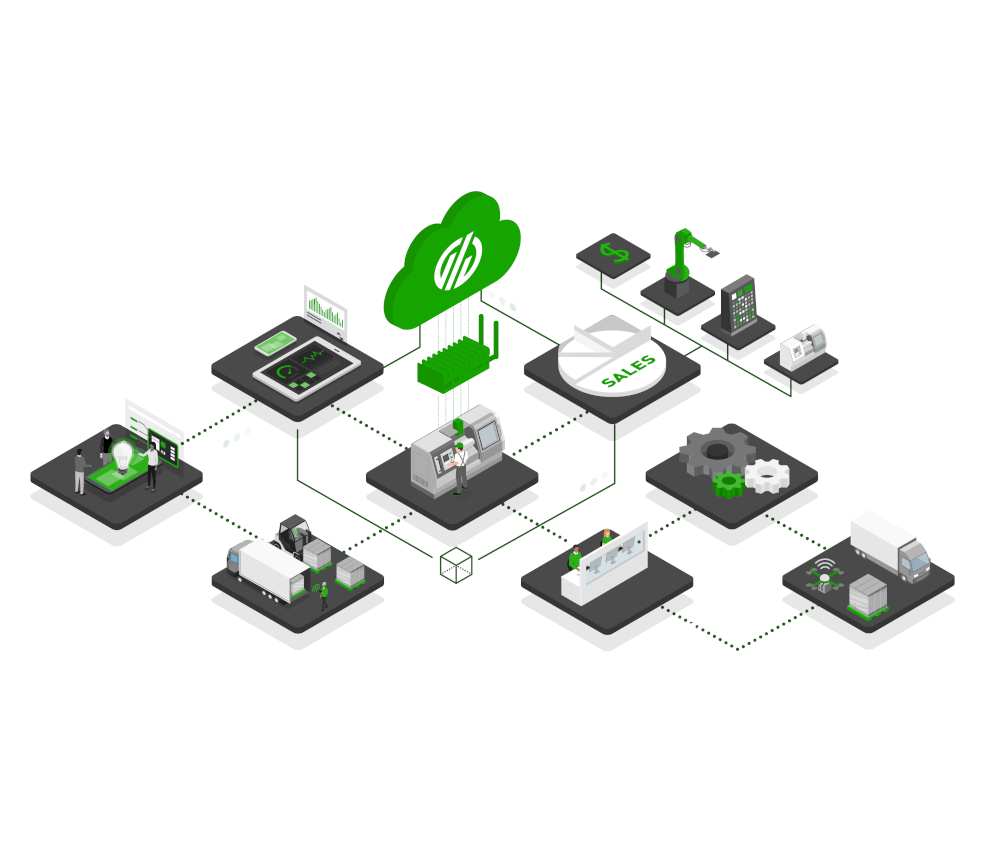Knowing how to solve production issues quickly and efficiently is a skill all manufacturing managers should possess. Though there are many strategies that exist to identify and fix problems, the starting point for eliminating the most severe shop floor issues is having an infrastructure in place to support the automated collection and standardization of production data.
With accurate, real-time data, managers can identify what problems are occurring, the root cause of the problem, and develop solutions to prevent them in the future.
The Most Common Production Issues
While there are hundreds of things that can affect a shop floor, most fall under one of the below categories. We encourage you to explore the linked resources for each of these broad categories, as they dive deep into solving these problems by leveraging data.
Downtime
Downtime is the plague of all manufacturing. When equipment isn't running, orders aren't being filled, and profit is not being captured. Downtime can be further broken into categories such as operator error, equipment failure, scheduling issues, capacity concerns, setups and changeovers, and others. And most companies don't realize the impact of downtime on their overall equipment effectiveness, missing the most obvious opportunities to improve.
Helpful resources:
Quality Problems
Quality issues can also be defined in several categories. Vendor quality is a significant concern for any company, as is human error and equipment condition. Quality headaches can be internally or externally generated, and they drive up costs and threaten delivery schedules.
Helpful resources:
Maintenance Issues
Most companies adhere to the age-old philosophy of preventive maintenance. But today's high-speed equipment requires a more dynamic, data-driven approach. When equipment isn't maintained at a given frequency, downtime events will eventually occur. But, if equipment is “over-maintained”, manufacturers will have wasted budget on machine parts, supplies, labor, and downtime that was not necessary. Using machine performance and health data, manufacturers can better understand when machines are likely to fail to ensure that the right amount of maintenance is provided, at the right time.
Helpful resources:
Process and Workflow Problems
Broken and outdated processes are an ongoing challenge for manufacturers, and their impacts are amplified as they turn into bottlenecks. Since many standardized work procedures are manually maintained and inadequately audited, it may be years before a process improvement team identifies the problem and tweaks the process.
Like process problems, teams may find it hard to overcome workflow issues. These may take the form of inadequate job center scheduling, WIP management, floor layout, or simply the ergonomics of access to parts and material by operators at the point of use.
Helpful resources:
Solving Production Issues
Solving production problems can be a complex endeavor. It requires that managers investigate what happened and look for a permanent fix. But as the digital revolution continues through the adoption of Industrial Internet of Things (IIoT) technology, these complex issues can be addressed by leveraging the power of data. And by capturing and analyzing data to visualize what is happening on the shop floor, managers can develop tactical and strategic remedies for solving current issues and preventing others before they happen again.
Consider these steps to help solve common production problems:
Step 1: Identify Problems
Before a company can fix its manufacturing issues, it must identify them. The first step is to have the right infrastructure in place to support the collection and standardization of production data. This information should be democratized across the organization in easily consumable visualizations and reports.
Only with accurate, real-time data will both operators and managers have an understanding of where problems are occurring and the most egregious reasons for waste. Manufacturing data collection is the foundation of industry 4.0, powering an unlimited number of use cases and giving key stakeholders the resources they need to make better, faster decisions.

Step 2: Dig into the Details
With data in hand, it is time to conduct a root cause analysis. Root cause analysis is an effective and powerful approach that traces production issues back to a specific cause. Once this cause is identified, changes can be enacted that will reverberate down the production line.
Root cause analysis often uses lean and Six Sigma tools such as "The Five Whys," fishbone diagrams, failure mode analysis, and Pareto charts to help visualize and understand why problems occur. This allows participants to separate the cause from the symptoms to arrive at a valid reason for the disruption.
 MachineMetrics Downtime Pareto reports help identify the top causes of downtime, helping you prioritize continuous improvement initiatives by better understanding where things are going wrong.
MachineMetrics Downtime Pareto reports help identify the top causes of downtime, helping you prioritize continuous improvement initiatives by better understanding where things are going wrong.
Step 3: Develop a Plan to Solve the Issue
With the actual cause identified, an improvement plan can be developed. This may be training, physical changes such as layout, standard work changes, material substitutions, or any number of steps alone or in combination to fix the problem.
Critical to the success of any improvement plan is the auditing process to keep the changes in place. This includes determining how success will be measured, how often the audits for the change will occur, what steps will be taken to further improve the process, and more.
Once again, the importance of data cannot be overstated. The data must be reliable, accurate, and as detailed as possible for the solution to be effective. Manual analysis and changes will only take you so far and are always subject to being forgotten, lost, or changed as the group moves to another problem. This is why automated solutions like MachineMetrics are integral to data-driven manufacturing success.
3 Tips on How to Prevent Production Issues
A machine is only as good as the processes that are used to run it. And in all cases, the better the quality and visibility of the data, the more useful it will be. With production monitoring software, companies can move from troubleshooting the same problem over and over to genuinely enacting a solution that not only lasts but can also be validated in real-time and honed over time.
Here are three tips for preventing production issues:
Analyze Data
Perhaps nothing is as crucial as analyzing production data. Without good, clean, accurate data, change is ineffective. Data is the key to visualizing the accurate picture on any production floor. But data is not just parts, job number, or hours counts. Data required for such visualization includes machine data, people data, system data, and data from other inputs throughout the enterprise.
Improve Operational Visibility
With accurate data, companies can achieve better operational visibility. Again, data capture and analysis with intuitive reporting provided by software is always preferable to manual collection and analysis. With real-time visibility, issues can be addressed proactively instead of reactively as operators, technicians, and managers gain insights over actual equipment and production state as it occurs rather than after it happens.

MachineMetrics displays production data in real-time for complete visibility of the shop floor. Operators and managers know exactly when machines are falling behind production goals or experiencing a downtime event, allowing them to resolve problem quickly.
Plan Equipment Maintenance
One of the most valuable contributions of automated data collection and analysis in manufacturing has emerged in its impact on maintenance. By leveraging real-time data to visualize the true state of production, maintenance can move from a preventive to a predictive state. This means that the same data guiding process and workflow changes for improvement can be used to predict part failure, order, and stage repair parts ahead of time, and schedule the optimum time for the repair to occur at the best time to reduce overall downtime (such as during a changeover).
Take Advantage of IIoT and Industrial Analytics
MachineMetrics is a powerful industrial data platform that enables the collection of accurate production data in real-time, automatically contextualizing and standardizing the data for immediate accessibility across the enterprise.
Via edge devices, MachineMetrics can connect to any equipment, from newer OEM equipment to legacy analog machines.
Once activated, the system is immediately available to help identify the true cause of downtime and bottlenecks and help you arrive at a root cause faster and with more confidence. This allows you to optimize your processes quicker and more accurately with actionable and customizable insights.
The MachineMetrics platform will enable higher efficiency, reduced costs, unlocked capacity, and a better view of what is truly happening on your shop floor. Contact us today to see how MachineMetrics can help you eliminate your issues with real-time data and applications.
Reach out to our team for a demo, or learn how Avalign Technologies experienced a 25-30% increase in OEE, a more effectively leveraged workforce, millions of dollars in increased capacity (without additional equipment), and increased throughput via the reduction of bottlenecks in a video case study with AWS.
Want to See the Platform in Action?


.png?width=1960&height=1300&name=01_comp_Downtime-%26-Quality_laptop%20(1).png)













Comments